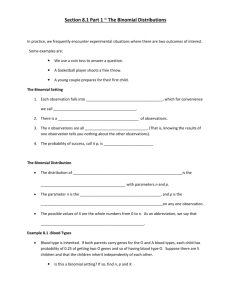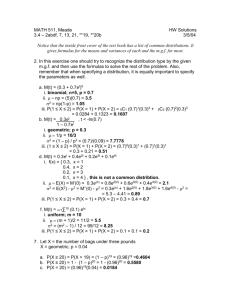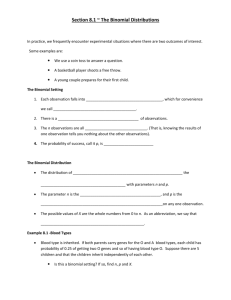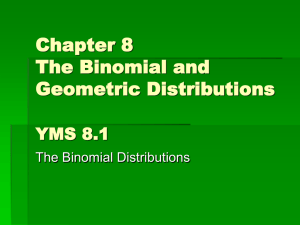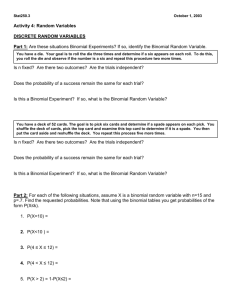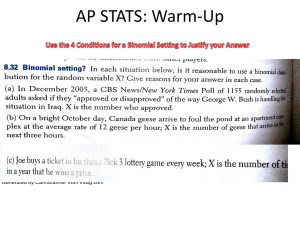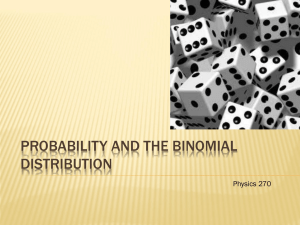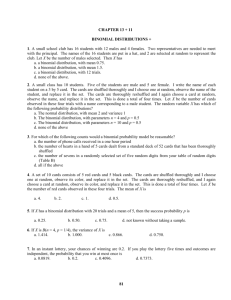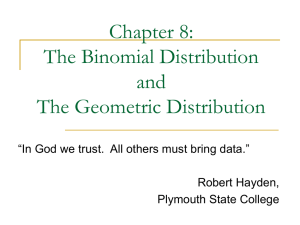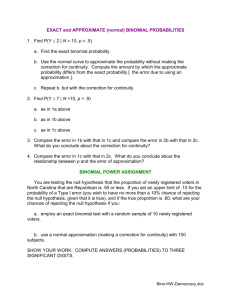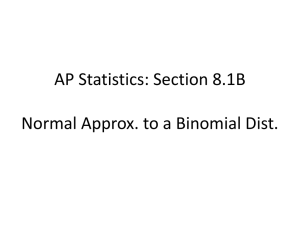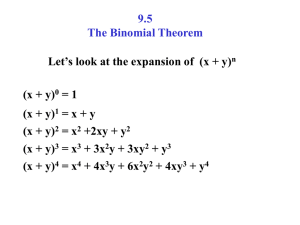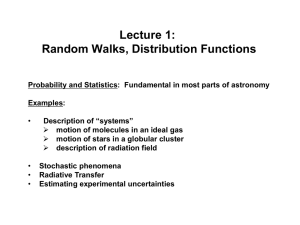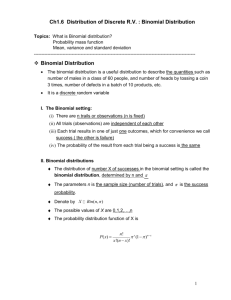PP Section 8.1A
advertisement
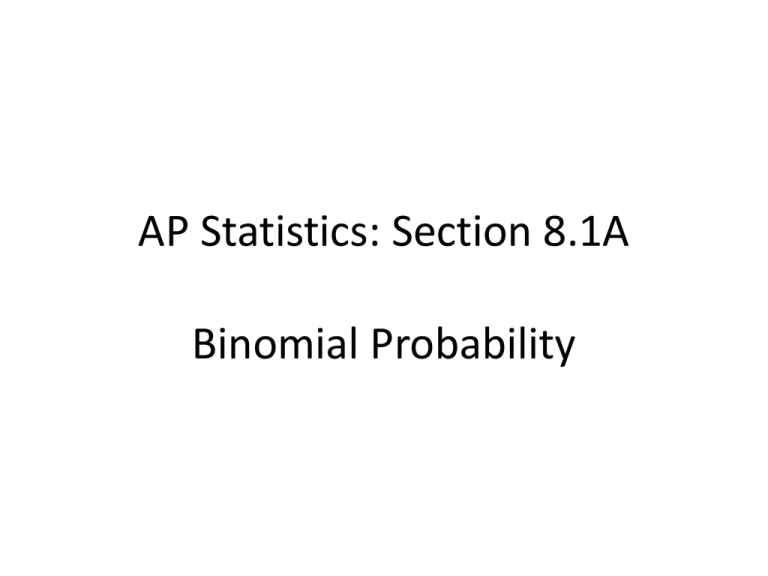
AP Statistics: Section 8.1A Binomial Probability There are four conditions to a binomial setting: 1. Each observation falls into one of just two categories: _________ success or ________. failure 2. There is a ______ finite number of observations, __. n 3. These n observations are all ____________. independen t 4. The probability of success, __, p is _________ constant for each observation. If data are produced in a binomial setting, then the random variable X = the number of successes is called a binomial random variable and the probability distribution of X is called a binomial distribution which is abbreviated ______. B (n, p ) Example 1: Determine if each of the following situations is a binomial setting. If so, state the probability distribution for X. If not, state which of the 4 conditions above is not met. Situation 1: Blood type is inherited. If both parents carry genes for the O and A blood types, each child has probability 0.25 of getting two O genes and so having blood type O. A couple’s 5 different children inherit independently of each other. Let X = number of children with type O blood. B ( 5 ,. 25 ) Situation 2: Deal 10 cards from a shuffled deck and let X = the number of red cards. No, probabilit ies are not constant. 26 26 25 , or 52 51 51 Situation 3: An engineer chooses a SRS of 10 switches from a shipment of 10,000 switches. Suppose that (unknown to the engineer) 10% of the switches in the shipment are bad. Let X = the number of bad switches in the sample. B (10 ,. 1) ****When choosing an SRS from a population that is much larger than the sample, the observations are considered independent. Binomial Probability: If X has a binomial distribution with n observations and probability p of success on each observation, the possible values of X are 0, 1, 2, 3, . . . , n. If k is any one of these values, then n k nk P ( x k ) ( p )(1 p ) k n k The notation is read n choose k and means the number of possible ways to choose k objects from a group of n objects. Ck It is also written _____ n n k n! k ! ( n k )! TI 83 / 84 : MATH PRB 3 : n C r The notation n! is read n factorial and means n(n - 1)(n - 2) (3)(2)(1) So 6! 6 5 4 3 2 1 720 By definition 0! 1 TI 83 / 84 : MATH PRB 4 :! Example 2 (combinations): How many different ways can we choose a subcommittee of size 3 from a student council that has 7 members? 7 7! 210 35 6 3 3!4! 7 n C r 3 35 Example 3: You randomly guess the answers to10 multiple choice questions which have 5 possible answers. What is the probability of getting exactly 6 correct answers? B (10 ,. 2 ) with x 6 10 6 4 (. 2 )(. 8 ) 6 . 0055 Binomial Probability on the TI83/84: 2 nd VARS DISTR 0 : binomialpd f ENTER binomialpd f ( n , p , x ) Example 4: Consider situation 3 in example 1. Find the probability that in an SRS of size 10, no more than 1 switch fails. B (10 ,. 1) where x 0 or 1 binomialpd f (10 ,. 1, 0 ) . 3487 binomialpd f (10 ,. 1,1) . 3874 .7361 Example 5: Corinne is a basketball player who makes 75% of her free throws over the course of a season. In a big game, Corinne shoots 12 free throws and makes only 5 of them. Is it unusual for Corinne to perform this poorly? Note: We actually want the probability of making a basket on at most 5 free throws. B (12 ,. 75 ) where x 0,1,2,3,4 or 5 Cumulative Binomial Probability on the TI83/84: 2 nd VARS DISTR A : binomialcd f binomialcd f ( n , p , largest x value) binmialcdf (12 ,. 75 , 5 ) . 0143 Any difference in answers between the manual calculation and using your calculator is due to rounding error.
